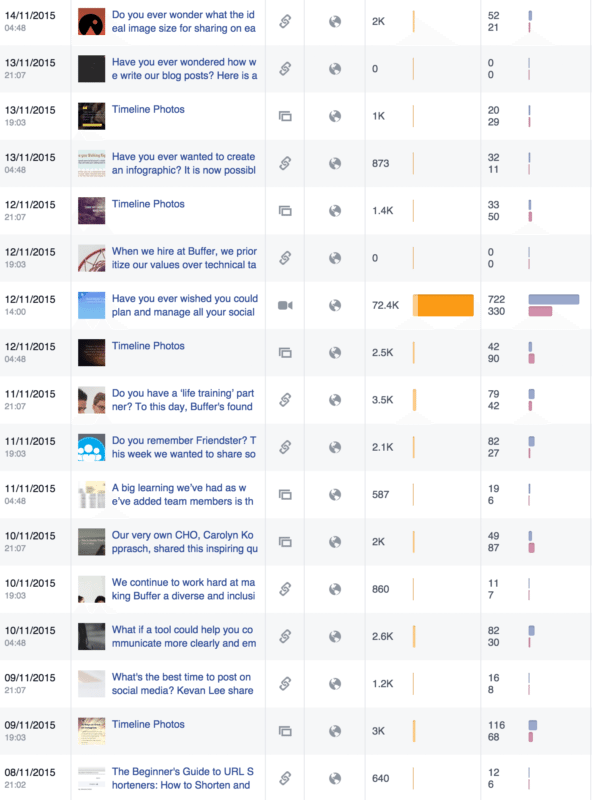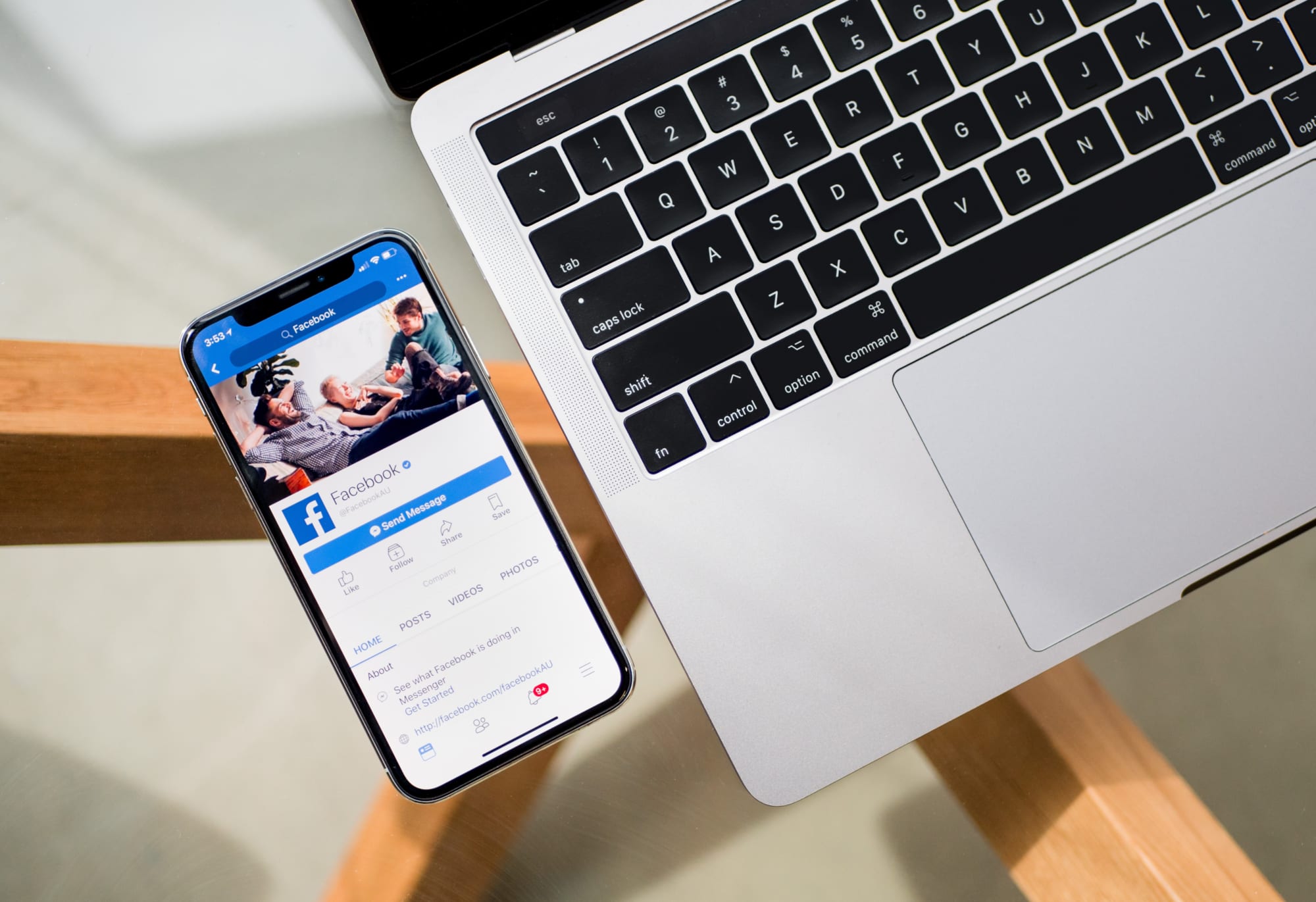If you search for information on how Facebook’s Newsfeed algorithm treats posts from 3rd party publishing apps, you’ll find plenty of content suggesting that reach and engagement will be lower through 3rd party posting.
As a subject very close to our hearts here at Buffer, we wanted to dive in and share our own thoughts and experiences in this area.
The TL;DR version, is that posts from 3rd tools are not penalized and will perform just as well as posts shared natively to Facebook.
If you’d like to dig a little deeper, I’d love to share our research and reasoning with you here.
Let’s go!
3 key reasons why Facebook 3rd party tools aren’t penalized
1. Our own (anecdotal) 3rd party posting test
As the idea for this post arose, we decided to run a quick experiment of our own to see whether posting from a 3rd party app (Buffer) or posting natively would have any affect of the reach and engagement our posts received on Facebook.
(Granted, a two-week study of one page doesn’t prove anything concretely and simply provides some anecdotal evidence).
Posting natively to Facebook
From November 15th-21st we scheduled every post natively through Facebook’s own scheduling tool.
The average post in this week reached 1,357 people (3.2% of our audience). And an average of 66 engagements (Post clicks, Likes, Comments & Shares).
Here’s the data from Facebook Insights:

Posting using Buffer
The average post in this week reached 1,595 people (3.8% of our audience). And an average of 70 engagements (Post clicks, Likes, Comments & Shares).
Here’s the data from Facebook Insights*:

*During this week we launched Buffer’s Social Media Calendar — due to the high engagement we see with a new launch (and paid boost) we excluded this post for the dataset used.
What this tells us
From this experiment it seems that posting using a 3rd party or natively won’t affect your reach or engagement on Facebook.
The week we posted with Buffer was a little higher on average but there could be a multitude of reasons at play here.
2. Facebook’s official statement (3rd party posts are not penalized)
A lot of the stigma around this subject probably comes form the fact that 3rd party posts used to be penalized on Facebook.
However, this is no longer the case. Back in 2011, Facebook’s Matt Trainer explained:
“…we recently made a fix that added more signals to detect good quality posting behavior. This should improve the situation with the distribution of posts coming from third-party apps in the News Feed.”
Facebook have also removed attribution from 3rd party posts, so a Facebook user now cannot tell whether a post has been shared natively or via a 3rd party.
At the time of announcing this Facebook again stated that it does not penalize Pages that make posts from 3rd party publishing tools, but said it was unclear whether mention of where a post is coming from had an effect on how users responded to it.
With the post attribution removed a few years back, it now feels clear that Facebook indeed do not penalize brands who post through 3rd party tools.
3. Most of the data on this subject is misread (and what to focus on instead)
Most studies we’ve read on this subject take a set of brands and measure performance of posts made by Pages that used a specific 3rd party tool, to the performance of posts made by those same Pages that did not use a 3rd party tool.
That’s a very rational approach, but some of the things these studies don’t account for is the types of brands using each 3rd party app:
For example, comparing data from a brand that uses an enterprise level piece of software like Adobe Social or Spredfast vs a brand who use PostPlanner or Hootsuite feels a little skewed to us.
Let me explain a little here…
What should we focus on with these studies?
Some 3rd party posting tools are deemed to get more reach than others, but really it could be any number of factors that mean brands using Buffer or Hootsuite or Adobe social, get more reach than other tools.
For example, many of the enterprise level brands that use products like Adobe Social will have large, highly engaged audiences — as well as strategic and creative teams behind their social content.
This means they’re likely to receive higher engagement than your average Facebook Page, whether they post natively, through Adobe Social, PostPlanner, Hootsuite or any other 3rd party tool.
In order for these studies to get more accurate findings from their results, we feel it’d be better to measure the same brands and way of posting across various tools (e.g. one brand using Buffer, Adobe Social, Hootsuite, etc).
Though our gut feeling is that this approach wouldn’t show any significant variations in reach or engagement no matter which tool is used to post.
Facebook knows what we like
We have that gut feeling because Facebook’s timeline prioritizes content from the pages and people we regularly engage with.
For example, I ‘Like’ The Next Web’s Page on Facebook. And because I regularly engage with their content, Facebook deems that I have an affinity with that page and ensures I see more content from them.

So whether a post is sent from a 3rd party or natively it’s still likely to show up in the timelines of more Facebook users as more people regularly engage with their brand and like to see their content (this helps to explain why we saw very little difference in our brief native posts vs Buffered posts experiment).
By penalizing 3rd party posts, Facebook would essentially make their timeline less engaging for their users.
Bonus: pay close attention to the content
Any drops in engagement or reach seen via 3rd party posting, could also be attributed to the type of content shared.
As Buzzsumo, who studied over 500 million Facebook posts, cautioned, is the same care put into the posts shared natively versus those shared through third party tools? It could be that 3rd party posting may simply cause users to create less engaging, and timely posts. Thus resulting in less engagement.
If you’re using a 3rd party tool – or even Facebook’s own scheduling feature – try to be mindful of your audience and ensure the content doesn’t come across as ‘automated’.
If you’re sharing a timely post about something real-time, it’s not a good bet to schedule it 12 hours later when the story is old.
Over to you
Over 2 million people use Buffer (including 2,500+ large businesses and agencies) and no customer has shown us data alluding to less reach or engagement on Facebook due to 3rd party posting.
Have you ever noticed a difference in reach or engagement for your posts shared via Buffer (or any other 3rd party tool) vs posting natively?
I’d love to hear your thoughts on this and the data used in studies below. Excited to jump in and join you in the comments.
Try Buffer for free
180,000+ creators, small businesses, and marketers use Buffer to grow their audiences every month.
Related Articles

In this article, Nupur Mittal shares insights into four research methods that help her find content ideas and identify unique takeaways.

Facebook marketing in 2019 isn’t dead. On the contrary, it’s far from it. Now removed from the dim outlook that businesses faced at the beginning of 2018, Facebook has and will remain an essential tool for brands’ marketing strategies moving forward. In our big State of Social Media 2019 Report, we found that 93.7 percent of businesses use and are currently active on Facebook — the most among any other social media network. And although we continue to see a dramatic rise in the usage
